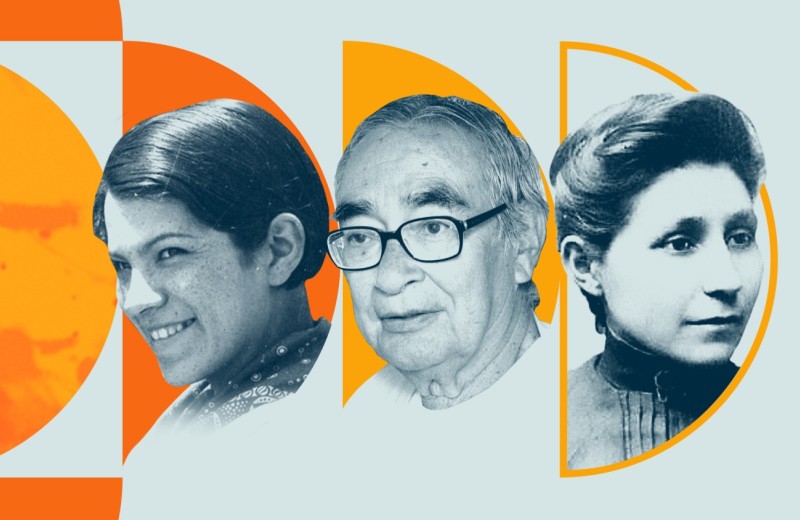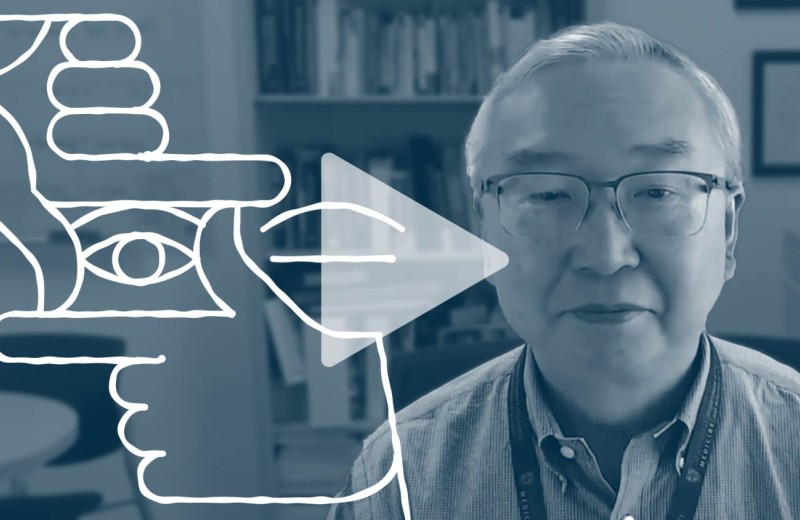Gladstone NOW: The Campaign Join Us on the Journey✕

Brianne Dotson breaks down what unconscious bias is, how organizations can mitigate it, and what steps individuals can take to reflect on their own biases.
Brianne Dotson is a former teacher, non-profit leader, and elementary school principal. She is also the founder of BMD Education Consulting Group, an organization that partners with schools, districts, charter management organizations, non-profit organizations, and philanthropic foundations to advance educational justice and attain measurable results.
With over 20 years of leadership experience and a commitment to educational justice for students of color, she leads organizations through equity-focused strategic planning processes and facilitates workshops with similar goals, such as unconscious bias training. Dotson holds a Master’s of education policy and management from the Harvard Graduate School of Education, and is currently pursuing her Doctorate of education leadership from Michigan State University.
Dotson recently hosted an unconscious bias training for Gladstone’s hiring managers. Here, she breaks down what unconscious bias is, how organizations can mitigate it, and what steps individuals can take to reflect on their own biases.
What is unconscious bias? Where do biases come from?
Unconscious biases, or implicit biases, are assumptions and prejudgments about groups of people that exist outside of one’s awareness. These biases stem from a combination of our lived experiences, social conditioning, and our brain’s propensity to organize and categorize information to make quick decisions.
For example, the people we grow up around, and images and messaging from the media, shape our opinions and beliefs about groups of people. Add in our brain behavior and the combination can lead to making snap judgments about people we meet, determining if they’re like us or belong to the groups we belong to or value, which influences what we think about them and the way we treat them, without even realizing we’re doing so. As a result, some people benefit and others are penalized.
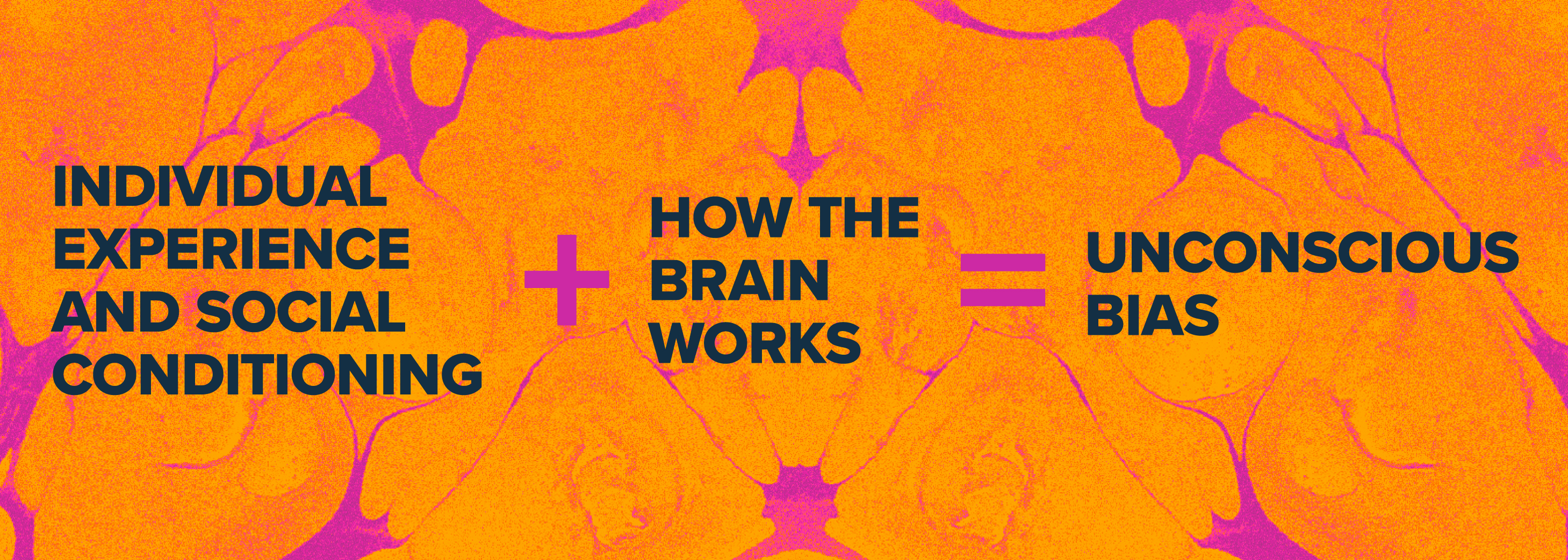
Unconscious bias relies on instinct instead of analysis. So unsurprisingly, the judgements and conclusions people come to are often incorrect, but more importantly, they can be discriminatory.
What are some common types of unconscious bias?
While we all have biases, many unconscious biases tend to be geared toward non-dominant groups based on factors such as class, gender, sexual orientation, race, religious beliefs, age, and ability.
These biases show up in our everyday lives in the small actions we take. This includes college professors being more likely to respond to a student’s email based on the perceived race or ethnicity of the student given their name; doctors recommending less pain medication for Black patients than white patients with the same medical condition; and Black preschool-aged boys being disciplined and expelled at much greater numbers than their white counterparts.
Unconscious bias is also prevalent in the workplace and can manifest in trends such as white applicants being called for interviews at a ratio of 2 to 1 compared to Black applicants with the same resume, or men being paid higher salaries than women in the same position.
What are the different ways unconscious bias impacts the workplace?
Unconscious bias impacts all aspects of professional settings, including team culture and the implementation of policies and processes. For example, unconscious bias can affect all elements of the recruitment, promotion, and retention processes.
More specifically, affinity bias (feeling a connection to those most like us), halo effect (projecting positive attributes about people without knowing them), and confirmation bias (looking to confirm pre-existing ideas about someone) can lead organizations to recruit and hire employees that match the dominant identity markers of their existing teams.
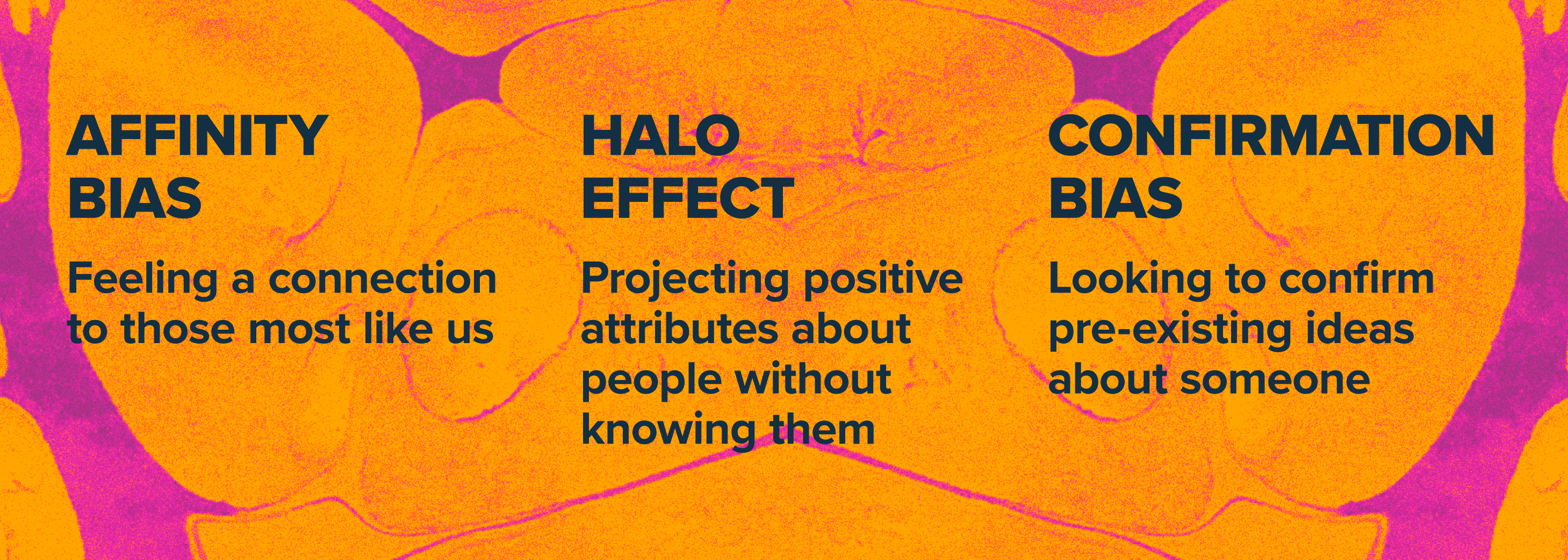
In other words, if an organization’s staff consists primarily of men, the unconscious bias of people involved in the hiring process can make it more difficult for female candidates to get hired. This can happen for many reasons. Affinity bias and the halo effect can lead male interviewers to score male candidates higher than female candidates, because they feel connected and project positive attributes onto them. Therefore, if we don’t consciously work towards becoming more aware of biases, and more importantly, if we don’t set up structures to disrupt biases, cycles of privilege are often repeated in the workplace.
How can individuals prevent unconscious bias? What questions should we be asking ourselves?
Unfortunately, unconscious bias can’t be prevented; we all have it and can’t escape it. However, unconscious bias can be mitigated at the individual and organizational levels, and it’s important for people and organizations to actively work toward doing so on a daily basis.
At the individual level, as a first step, you can become more aware of the biases you possess. This requires us to slow down and question our collective attitudes and beliefs.
- Why do we believe graduates from top-tier universities are better qualified than graduates from lesser-known institutions?
- Why do we give more merit to the ideas and contributions of male colleagues?
Interrogating the information and experiences that led us to form those thoughts and behaviors can be uncomfortable, but is imperative in mitigating unconscious bias. And because unconscious bias depends on quick decisions, slowing down and giving ourselves opportunities to question our thoughts, beliefs, and ideas before taking action is an important strategy.
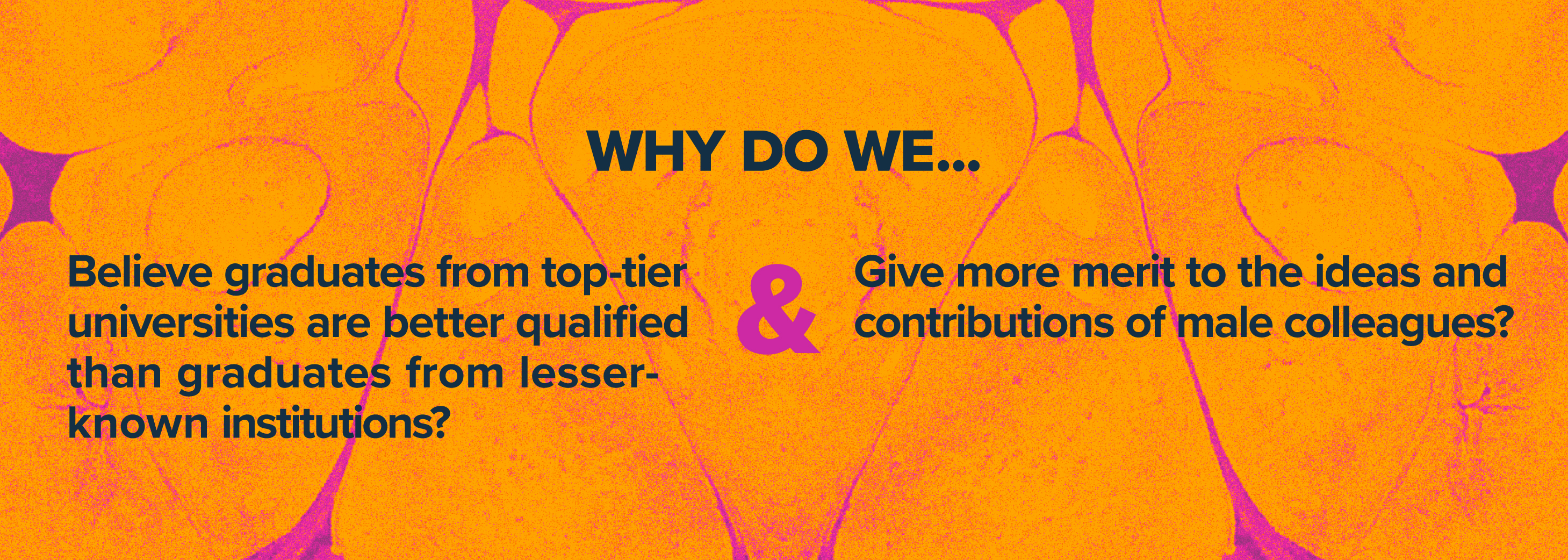
General Reflective Practice Steps
Unconscious bias is entangled into our everyday lives, so it’s critical to engage regularly in reflective practice. Journaling and working with an accountability partner are additional strategies you can use to support your reflective practice. Reserving a few minutes on your calendar to reflect every day can be helpful in establishing a habit of daily reflection.
- Consider the framework or values you aspire to have guide your beliefs and actions. (i.e., I believe men and women are equally capable of being excellent employees.)
- Reflect on your experience. What did you do or say? Did your actions match your aspired beliefs? (i.e., I scored male candidates higher on their interviews than I did female candidates. What factors might have led me to those actions? When I slow down and examine my actions, do I agree with them or would I change them?)
- What can you do differently next time?
It is important to remember that everyone has unconscious biases. We are socialized and programmed to have them. The important step is for people to actively work to mitigate their biases through reflective practice.
How can organizations reduce unconscious bias?
While it is important for individuals to mitigate unconscious bias through reflective practice, the most effective way to mitigate unconscious bias on the organizational level is through reflective structures that shape policies and practices, and facilitate open discussion.
During the hiring process, this means setting and sharing clear goals with the hiring team before the interviews start, as well as agreeing on selection criteria, ranking its importance, and creating an aligned evaluation tool that reflects the criteria and priorities. It also means making sure all team members understand the different forms of bias so that they can work to mitigate them from occurring.
These reflective structures help ensure the hiring team is working toward the same goal and that each member is aware of the ways biases can impact the process.
When recruiting and educating the hiring committee, it’s important to involve multiple stakeholders in the process. This allows for a breadth of perspectives, broadens the base for idea generation, and advances the teams, labs, and entire organization toward a culture of inclusivity. In addition, educating team members about unconscious bias and providing space for open dialogue also allows your employees the opportunity to learn in a safe environment. Be mindful that if your organization does not have large numbers of women or people from underrepresented backgrounds, repeatedly asking the same few people to participate in processes can create additional burdens on their time and detract from their other responsibilities. Ensure that your organization strategically thinks through how to engage all groups without burdening them.
“The most effective way to mitigate unconscious bias on the organizational level is through reflective structures that shape policies and practices, and facilitate open discussion.”
During the interview process, you should predefine merit and standard questions to support fairness and lessen subjectivity. For example, ambiguous criteria like “excellence in research and teaching” allows for bias of ascribing merit to those who look and act like us. Standardizing questions also allows for comparison and evaluation across applicants on similar issues.
When you first review a candidate’s application materials, you may be looking for evidence that confirms your assumptions about them. One way to mitigate this unconscious bias is to implement blind interviews, where demographic and other identifiable characteristics are removed from resumes. This allows you to get to know a candidate first and contextualize their application materials in a meaningful way.
Why is unconscious bias training important?
Unconscious bias training can be an important tool to educate team members on the various types of bias, as well as on individual and organizational mitigation strategies.
Ideally, the training builds awareness, provides common language, and creates a space for dialogues and reflection. These trainings can also facilitate stronger employee relationships, inclusivity, and a sense of community, which in turn increase productivity, creativity, and innovation.
While unconscious bias training is helpful, it’s insufficient without complementary equity-focused organizational and structural efforts.
If an organization doesn't have any DEI programs in place, what are the first steps they should take?
The first step in embarking upon diversity, equity, and inclusion (DEI) efforts is for an organization to understand their current landscape from the perspective of a broad variety of employees, and then work with a diverse group to set aligned and strategic goals. During this process, it is imperative for organizations to engage in deep listening and seek root causes instead of quick fixes.
DEI efforts can be powerful and effective when organizations take the time to embark on a meaningful process, and create space for individuals to learn, reflect, and grow.
Highlighting Native American Scientists
Highlighting Native American Scientists
Learn more about these indigenous scientists who’ve made an impact on their fields
Communications DiversityNeurodiversity in the Workplace
Neurodiversity in the Workplace
Hear about the “Strengths-Based Model of Neurodiversity” and how it can help neurodiverse individuals be successful in finding employment and in maximizing their professional potential
Communications DiversityPUMAS Program Receives Five-Year Grant to Fuel Outreach, Diversify Science
PUMAS Program Receives Five-Year Grant to Fuel Outreach, Diversify Science
The impactful summer internship program, created at Gladstone Institutes, immerses select undergraduates in cutting-edge science
Postdoctoral and Graduate Student Education and Research Development Affairs Student Outreach and Science Education Institutional News Diversity

